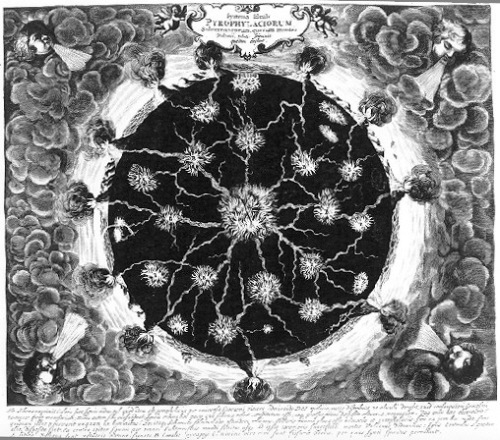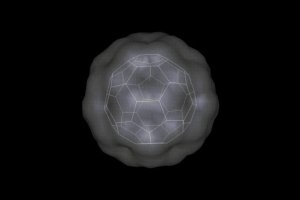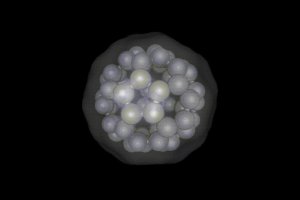_______________________________________________________________________________________________
Or, “Sacred Geometry in the Single Cells.” This video contains selections from the the film “Proteus”, a documentary concerning the life, work, and philosophy of naturalist Ernst Haeckel, (1834-1919). Haeckel was a German scientist who coined the phrase “ontogeny recapitulates phylogeny” and the terms “Darwinism” and “ecology.” He was first to postulate a “missing link” between ape and man and was proven correct when Java man was found in 1891. A staunch evolutionary biologist, Haeckel put Darwin on the world map. His books and monographs, placing Darwin in a broad social and philosophical context, were circulated internationally; they outsold On the Origin of Species by a large margin. Haeckel was commonly referred to as “the Darwin of Germany.”
Haeckel was also an accomplished artist. His idol was Goethe, who maintained that art as well as science could unearth the underlying truths of nature. For both Goethe and Haeckel, morphology had aesthetic roots. Haeckel traveled far and wide, from Sicily to Ceylon, to the North Sea, and beyond. Sketchpads and watercolors accompanied his microscope wherever he went. His on-the-spot drawings of deep-sea vegetation, aquatic creatures, frogs, birds, and higher animals were turned into more than 1000 engravings.
Sketchpads and watercolors accompanied his microscope wherever he went. His on-the-spot drawings of deep-sea vegetation, aquatic creatures, frogs, birds, and higher animals were turned into more than 1000 engravings.
The film tells of the man’s character and influences while using his detailed engravings of Radiolaria, single celled marine organisms, which also illustrate many of the shapes common in sacred geometry. Fascinating and beautiful!




![Kircher_[2]mundus subterraneus pyrophylaciorum](https://starinthestone.files.wordpress.com/2012/08/kircher_2mundus-subterraneus-pyrophylaciorum.jpg?w=500&h=446)
![Kircher_[3]mundus subterraneus pyrophylaciorum 1668](https://starinthestone.files.wordpress.com/2012/08/kircher_3mundus-subterraneus-pyrophylaciorum-1668.jpg?w=500&h=442)




















